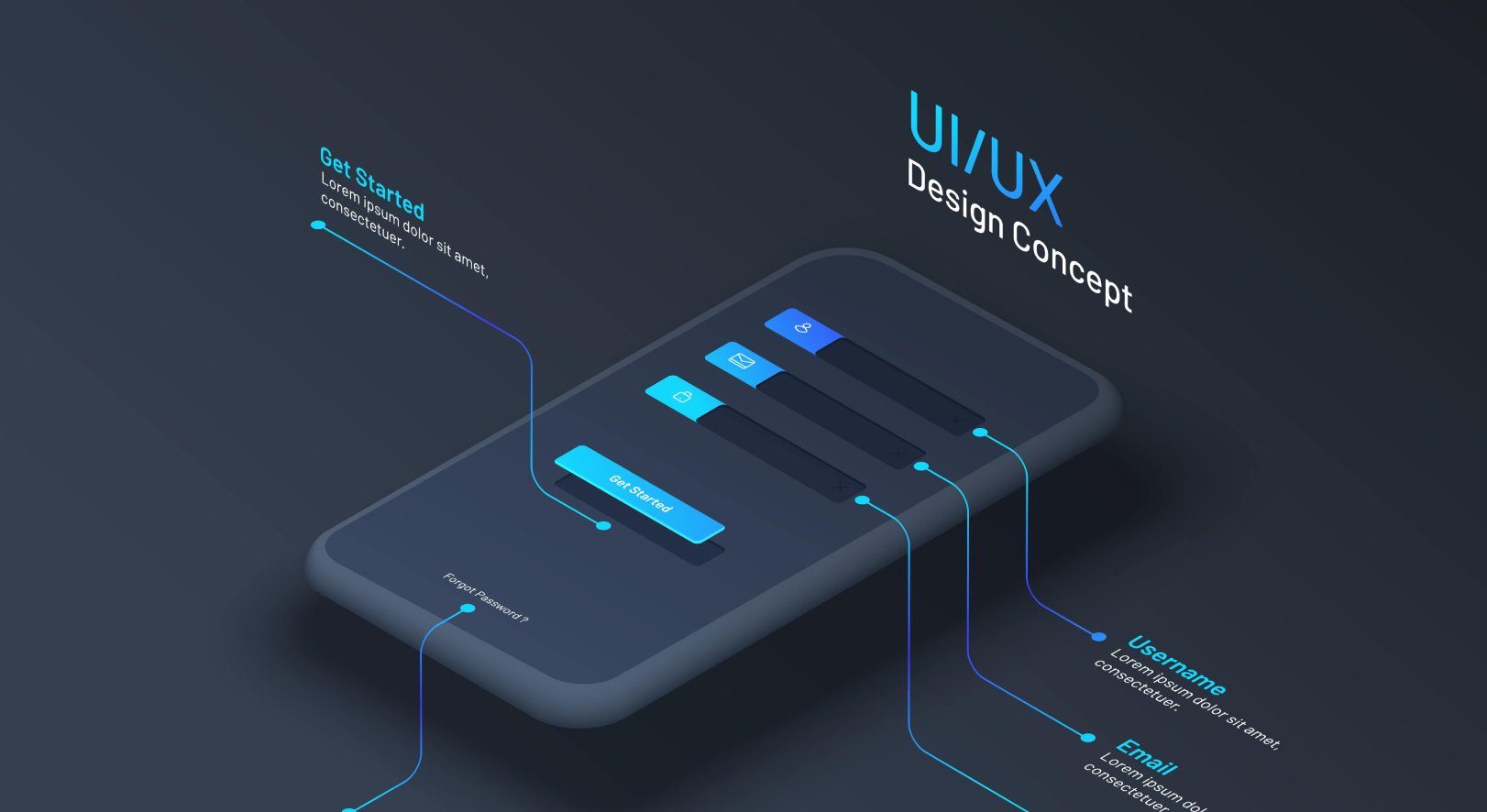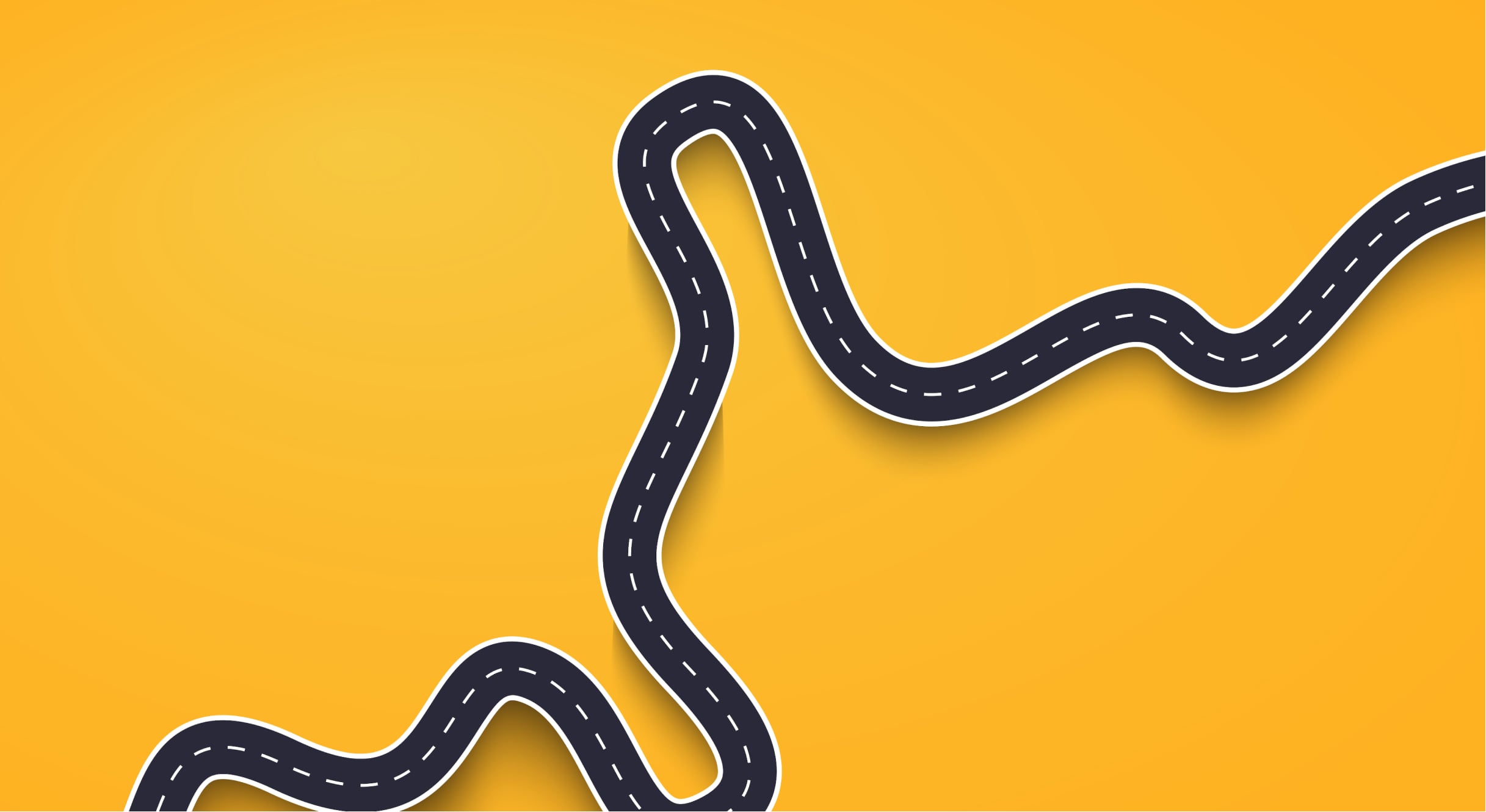
With the growth of UX today, there are a plethora of design methodologies but a designer’s process will depend on the problem they’re solving. Approaches can differ based on the constraints of a project. One team may prefer a simple approach, whereas another may opt to blend two or more together.
These design processes are similar to the scientific method – define the problem, experiment, test, and learn from the results. Most design processes involve roughly 3-7 phases or steps, any of which may overlap and are not sequential.
Any of these steps can be repeated until the product is “perfected”. (Source: https://www.injazat.com/en/capability/design-thinking.php)
UX Design Processes Incorporate Design Thinking
A UX design process typically follows something akin to a design thinking approach. Design Thinking is a user-centered design methodology that offers a hands-on approach for analyzing complex problems to come up with innovative solutions.
Rather than jumping to immediate solutions, designers challenge assumptions and ask questions to uncover the actual problem. There are enormous amounts of regular collaborations between the users and stakeholders to ensure that the solution targets the project goals.
Is the UX Design Process Different from Design Thinking?
Another adapted version of the UX design process is Lean UX, which works more fluidly in an Agile environment. An agile environment moves in cycles called “sprints”, which typically lasts 1-2 weeks.
These interactive cycles are like mini-projects that start with a kickoff and finish with a demo of the developed product. In this process, any unnecessary documentation or steps are eliminated to focus on the outcome rather than the process deliverables. The phases can be similar to Design Thinking but sometimes shortened or skipped completely.
With that being said, let’s further explore the major phases of a design process using Design Thinking as our main reference.
Empathize

The first step of any project involves gathering as much research as possible in order to better understand the design problem. This step is necessary to deeply empathize with our target users. Within project constraints, this process could last anywhere between an hour to a couple of weeks.
To truly understand a design problem, it can be broken up into three major areas: the market space, the topic, and user research. Typically, market research involves investigation on direct and indirect competitors, market trends, etc. Topic research aims to understand the current hows and whys in the respective problem space. User research is a pivotal component of digital design. This often involves talking to stakeholders to gather stories and information regarding their experiences.
Some of these approaches can serve as tools to gather user research:
- Interviews: an in-depth method of gathering qualitative and quantitative insights through one-on-one conversations.
- Contextual inquiry: a semi-structured interview to obtain context of use. Users are observed while working in their natural environment.
- Surveys: a time-efficient and inexpensive way to quickly gather user satisfaction and feedback about a product.
- Questionnaires: similar to surveys but users can remain anonymous
- Observation: watching users interact with the product in a controlled or natural environment.
- Card-sorting: a method to explore relational content and perceived information hierarchy. Users are asked to sort and categorize terms.
- Heuristic review: reviewing for usability issues. Can be used for a potential redesign or new implementations of an existing product.
- Feature matrix: a tool to compare the value and cost of features in products to determine the minimum viable product with a feature.
- Competitor analysis: a research process that compares how others are currently trying to solve a similar problem.
Define

In this next step, the research findings are synthesized. We look for patterns and insights about our users and pose various problems we can solve for them. It’s important that the problem is looked at from many perspectives. This ensures that we’re solving the right problem for our users. The following are some methods to help synthesize the data:
For defining your users:
- Empathy map: a visual which maps out what the user(s) said, did, thought, and felt as well as their pains and gains.
- Persona: a representation of behavior patterns or attitudes of the user; this can come in the form of provisional personas before research as well as a hypothesis of who the audience may be.
“The purpose of personas is to create reliable and realistic representations of your key audience segments for reference”. usability.gov
For understanding users in a broader context:
- Storyboard: a visual narrative of the user experiences and a perspective solution for the user to interact within the context of the problem.
- Journey map: a diagram of the user’s journey and what they experienced during the process.
To understand the flow:
- User flow: a chart that maps out what users process through your product; this flow doesn’t have to be linear and can branch out with routes to optimize the user experience.
- Task flow: a single flow completed similarly by all users for a specific action.
- Sitemap: more specific to website-building, this is a collection of pages for one or more of the main tasks and how they are linked together.
To look for insights:
- Point-of-view statement (POV): clear, actionable problem statements that pose the design challenge in the form of user needs and why.
- “How might we…” (HMW) statements: actionable problem statements in question form to prompt potential solutions.
Ideate

After understanding users and defining the problem based on research synthesis, the ideation process begins! This portion is interactive and collaborative to explore all of the possible solutions, good and bad, before narrowing down what ideas to move forward with. There are a ton of possible methods that teams use here, some of them include:
- Brainstorm: an activity that can be done individually and/or as a group to generate and build ideas; some methods also include Crazy 8’s, Powers of Ten, etc.
- SCAMPER: Substitute, Combine, Adapt, Modify, Put to another use, Eliminate, and Reverse – these are 7 types of questions to prompt innovation on current products and solutions.
Design

From the previous steps, you and your team have established a clear understanding of user expectations and have generated promising directions to move forward with from ideations. This step is when ideas become actionable.
Similar to ideate, this phase is also highly interactive and collaborative. It is important to gather input and critiques from others to better the development of the product. The following are the products of this phase:
- Sketches: these hand-drawings are the initial step towards visualizing the concept; they are quick for the purpose of establishing layout before deciding which would be further fleshed out through wireframes.
- Wireframes: using the sketches, these are digitized pages with key elements detailed. Wireframes can range from low-fidelity (grayscale with basic content and visuals) to high-fidelity (often colored, more interactive and filled in with real content).
- Style guide/UI kit: a record of design elements and interactions such as buttons, typography, color, navigation menus, etc. This also serves as documentation to hand off to developers.
Test

In this phase, prototypes (a preliminary, limited simulation of the product) are built to test and improve the selected solutions. For prototyping, designers will produce key screens and link them together for testing.
Prototypes can be paper designs but are often wireframes with the help of programs such as Invision, Marvel, or Adobe XD to include links and buttons. In a more advanced setting, this could be done in collaboration with developers to create full HTML prototypes.
During this portion, a small group of prospective users, as well as the design team, will interact with the design to complete various tasks. A more successful test setting would be moderated and controlled to evaluate the usability of the product. The data can then be synthesized using an Affinity map, which organizes the results into clusters to measure the success percentage.
Iterate and Repeat

While the process here was described linearly, there’s nothing that says that designers won’t cycle backward to redesign and continue testing. Often, after testing, designers will return to the drawing board to enhance features and add clarity for users. If the solution didn’t work as expected, the team might revisit brainstorming to come up with more ideas to try.
Regardless of the iterative approach of the design process, the goals remain the same: to define the problem and arrive at the solution. While it’s not simple to create a working solution, it is important to have open communication, clarity about the context of the design goals, and giving feedback.
As a result, you will arrive at more meaningful iterations and solutions for your users.

